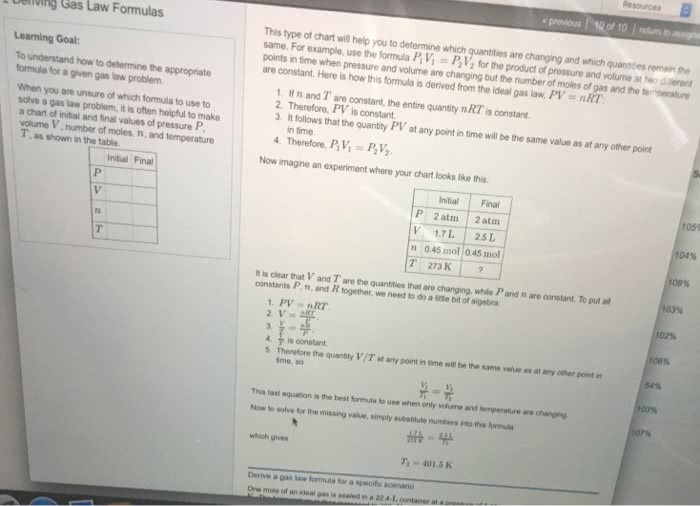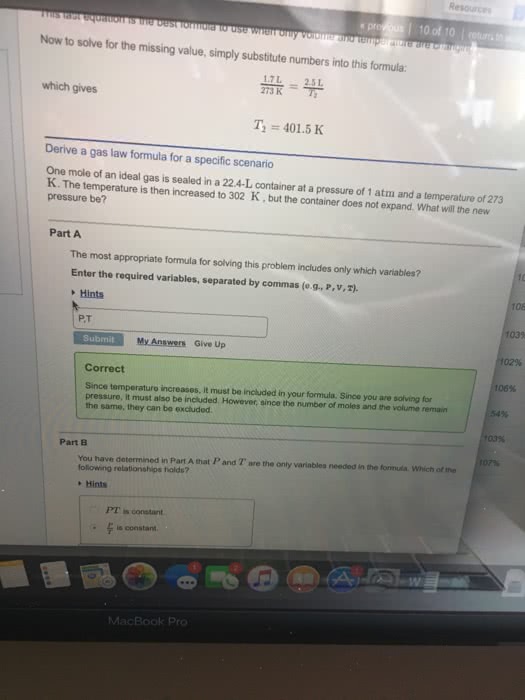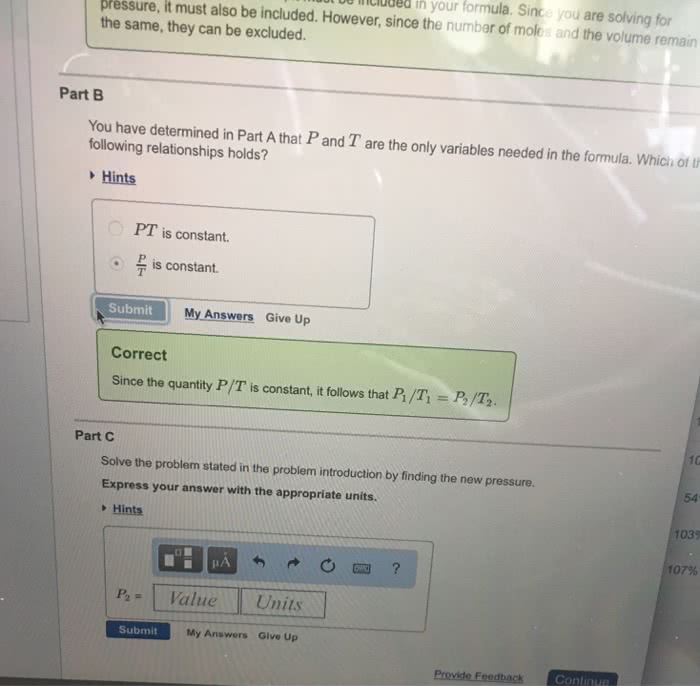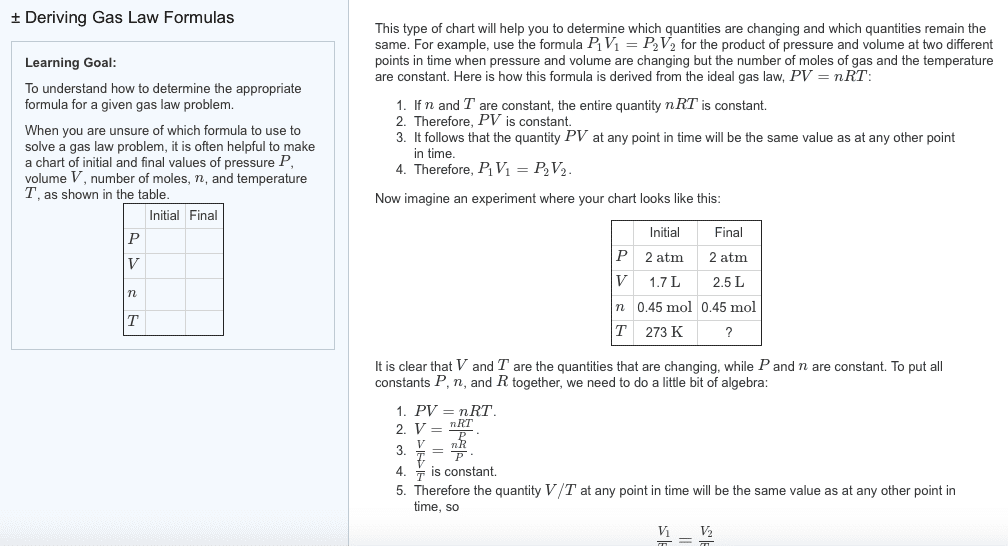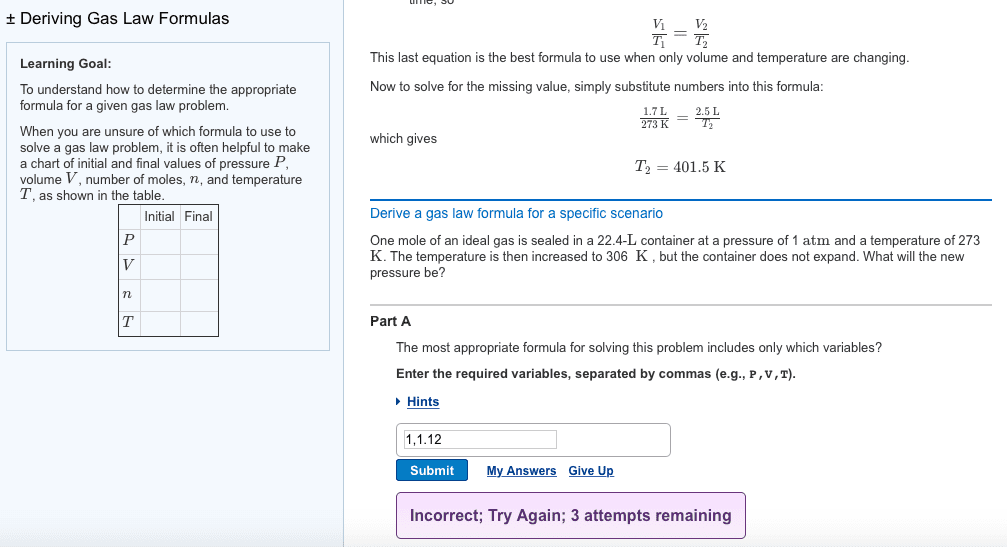CHM 143 Lecture Notes - Lecture 14: Ideal Gas Law, Combined Gas Law, Gas Balloon
Document Summary
*the above relationships exist (linear relationships) when gas behave as an ideal gas . Particles do not interact because large amount of space between gas particles. Independent of the i. d. of the gas. R= gas law constant indicates units for p and v. Can calculate variable if other 3 are known. R= 0. 008206 atm l/mol k r= 62. 37mmhg l/mol k 760 mmhg/1 atm. Calculate using ideal gas law: any one variable (p,v, n, or t, molarity gas, density gas, molar mass gas, stoichiometry. *although multiple versions of r. better to use one version and convert p & v to match units in. Calculate the number of moles of helium gas in a helium balloon if the balloon capacity is 4. 0l at 2. 0 atm and 25. 00c. Pv=nrt (2. 0atm)(4. 0l)=n( 0. 08206 atm l)(298. 2 k) mol k n= 0. 33 mol. Pv=nrt (3. 5atm)(5. 00l)= n ( 0. 008206 atm l)(295. 5 k) mol k. M= #moles solute/ l solution # moles gas/ l (total volume)




